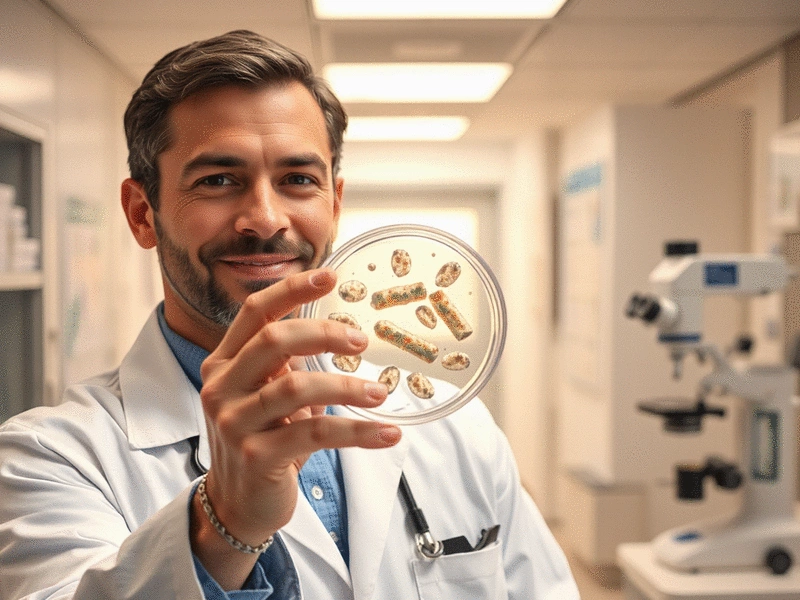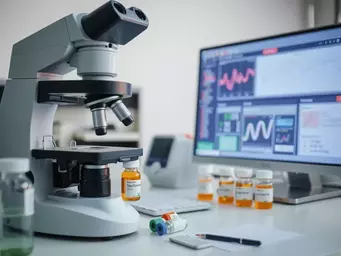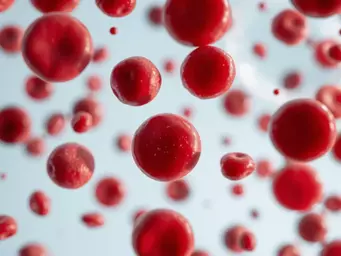Stem Cell Transplants in Leukemia Recovery

Consider this: the journey through leukemia recovery can be daunting, but understanding stem cell transplants can illuminate the path toward hope and healing. This guide aims to clarify the vital role these procedures play in recovery, empowering patients and their families with knowledge.
What You Will Learn
- Stem cell transplants can restore healthy blood cell production, significantly impacting leukemia treatment outcomes.
- The two main types of transplants—autologous and allogeneic—each have unique benefits and considerations.
- Different types of leukemia require tailored approaches; for instance, Acute Myeloid Leukemia often necessitates immediate treatment.
- Post-transplant care includes lifestyle adjustments, regular check-ups, and emotional support to enhance recovery.
- Understanding the various sources of stem cells, like umbilical cord blood and peripheral blood, can inform treatment choices.
- Engagement in support groups and mental health resources is crucial for addressing the emotional journey post-transplant.
Understanding Stem Cell Transplants in Leukemia Recovery
This visual outlines the key aspects of stem cell transplants in leukemia treatment, covering types, roles, and post-transplant considerations.
Stem Cell Transplant Types
Autologous: Patient's own stem cells are used.
Allogeneic: Donor stem cells are used.
Key Stem Cell Sources
- Hematopoietic Stem Cells: From bone marrow or peripheral blood.
- Umbilical Cord Blood: Collected at birth, lower GVHD risk.
- Peripheral Blood: Mobilized from bloodstream.
Post-Transplant Care
- Regular Check-ups: Monitor recovery & complications.
- Nutritious Diet: Support immune system.
- Gentle Exercise & Rest: Rebuild strength.
- Emotional Support: Counseling, support groups.
Empowering patients through knowledge and support for a healthier future.
The Importance of Stem Cell Transplants in Leukemia Recovery
When it comes to leukemia recovery, stem cell transplants play a crucial role. These procedures offer hope and a potential path to remission for many patients facing this challenging diagnosis. Essentially, a stem cell transplant involves replacing damaged or diseased bone marrow with healthy stem cells, which can help restore the body's ability to produce blood cells effectively.
Understanding stem cell transplants can feel overwhelming, but it’s vital to grasp some basic concepts. The two main types of transplants are autologous, where the patient’s own stem cells are used, and allogeneic, where stem cells from a donor are utilized. Each type has unique considerations and applications in leukemia treatment.
Understanding Stem Cell Transplants: A Lifeline for Leukemia Patients
Stem cell transplants serve as a lifeline for many leukemia patients, providing the chance to replace unhealthy blood cells with healthy ones. This process can significantly impact the course of treatment and recovery. For patients battling leukemia, these transplants can offer a new beginning, but they involve intricate procedures and careful planning.
- What are stem cells? Stem cells are the body’s raw materials—cells from which all other blood cells are derived.
- Why are they important? They can develop into red blood cells, white blood cells, and platelets, essential for maintaining overall health.
- How do transplants help? They can restore healthy blood cell production, leading to a better immune response and overall health improvement.
In my experience as a hematologist, I’ve seen how understanding this process helps patients navigate their treatment options with more confidence. Knowledge is truly empowering!
Types of Leukemia and Their Treatment Needs
Different types of leukemia, such as Acute Myeloid Leukemia (AML), Chronic Myeloid Leukemia (CML), and Chronic Lymphocytic Leukemia (CLL), each have unique treatment needs that can influence the decision to pursue a stem cell transplant. For instance, AML often requires immediate and aggressive treatment, while CLL may allow for a more gradual approach.
- AML: Typically treated with intensive chemotherapy and often requires an allogeneic transplant for a better chance of recovery.
- CML: Treated with targeted therapies, but in advanced cases, a stem cell transplant may be necessary.
- CLL: Patients may not need a transplant immediately; treatment often begins with monitoring and may later include transplant options.
Recognizing the specific needs of each leukemia type is crucial for determining the best treatment course. It’s essential to work closely with healthcare providers to tailor the approach that fits each patient's unique circumstances.

The Role of Stem Cells in Leukemia Treatment
Stem cells are pivotal in leukemia treatment, especially when it comes to utilizing different sources. Hematopoietic stem cells, which are found in bone marrow, are the most common type used in transplants. Additionally, umbilical cord blood has emerged as a promising alternative source, offering certain advantages, such as a lower risk of graft-versus-host disease. The use of peripheral blood stem cells is also significant, as they are mobilized from the bloodstream for collection.
- Hematopoietic Stem Cells: Derived from bone marrow or peripheral blood, they are essential for producing blood components post-transplant.
- Umbilical Cord Blood: These stem cells are collected from the umbilical cord at birth; they can be a viable option for patients without suitable donors.
- Peripheral Blood Stem Cells: These are collected from the bloodstream after mobilization using specific medications.
As a hematologist, I have seen firsthand how these various sources of stem cells can change the trajectory of treatment. The choice of stem cell source can significantly affect a patient’s recovery journey, making understanding these options vital.
Pro Tip
Did you know? Regular follow-ups after a stem cell transplant can significantly enhance your recovery? Staying in close contact with your healthcare team allows for timely interventions and adjustments to your treatment plan, ensuring that you are supported every step of the way.
Post-Transplant Life: Navigating Long-Term Care and Lifestyle Changes
Managing Health After a Stem Cell Transplant
After undergoing a stem cell transplant, it’s crucial to focus on your health and adapt to new routines. Regular check-ups with your healthcare team will help monitor your recovery and catch any potential complications early. These visits typically include blood tests, physical exams, and assessments of your overall well-being.

In addition to medical follow-ups, here are some necessary lifestyle adjustments you might consider:
- Maintaining a nutritious diet to support your immune system and overall health
- Incorporating gentle exercise to gradually rebuild strength and endurance
- Prioritizing adequate rest to aid in recovery
- Avoiding crowded places to minimize infection risk during this vulnerable period
These changes can significantly impact your long-term wellness. Remember, every individual’s journey is unique, and it’s important to tailor your lifestyle to your specific needs.
Addressing Emotional and Psychological Needs Post-Transplant
The emotional journey after a stem cell transplant can be just as critical as the physical recovery. Many patients experience a mix of relief, anxiety, and uncertainty. It’s completely natural to feel this way! Open communication with your support system can help navigate these feelings.
Here are several insights to consider for emotional well-being:
- Engage in support groups where you can share experiences and gain perspective
- Consider speaking with a mental health professional who specializes in post-cancer care
- Practice mindfulness techniques such as meditation or yoga to ease stress
Finding a balance between managing your physical health and emotional well-being can lead to a more fulfilling recovery process. Remember, you're not alone on this journey; many resources are available to help you along the way.
Supportive Care: Essential Resources for Post-Transplant Patients
Supportive care plays a vital role in aiding recovery after a stem cell transplant. This encompasses a variety of resources aimed at enhancing your quality of life. Here are some essential options you should explore:
- Patient education: Understanding your condition and treatment can empower you to make informed decisions
- Support groups: Connecting with others who have shared similar experiences can provide comfort and insight
- Nutritional counseling: Tailored dietary plans can greatly support your recovery and overall well-being
- Rehabilitation services: Physical therapy can help you regain strength and mobility post-transplant
At What Is Leukemia, we're committed to providing resources and education to empower you on your journey. By utilizing these supportive care options, you can significantly improve your recovery experience and adjust to life post-transplant.
Common Concerns and Questions About Stem Cell Transplants
Frequently Asked Questions About Transplants and Recovery
As you move forward in your recovery, you may have questions about the transplant process and what to expect. Here are some common inquiries from patients:
- What are the signs of complications after a transplant? It's essential to be aware of symptoms like fever, unusual fatigue, or signs of infection.
- How long will my recovery take? Recovery can vary greatly; some may feel better in months, while others take longer to adjust.
- Will I need additional treatments? Depending on your progress, your healthcare team may recommend ongoing therapies.
Being proactive about your questions and concerns can help ease anxiety and prepare you for the road ahead.
FAQs
- What is the primary purpose of a stem cell transplant in leukemia recovery?
Stem cell transplants aim to replace damaged or diseased bone marrow with healthy stem cells, restoring the body's ability to produce healthy blood cells and potentially leading to remission. - What are the two main types of stem cell transplants?
The two main types are autologous transplants, which use the patient's own stem cells, and allogeneic transplants, which use stem cells from a donor. - How do different types of leukemia affect transplant decisions?
Treatment approaches vary by leukemia type; for example, Acute Myeloid Leukemia often requires aggressive treatment and an allogeneic transplant, while Chronic Lymphocytic Leukemia may involve a more gradual approach. - What are the main sources of stem cells for transplantation?
Key sources include hematopoietic stem cells from bone marrow or peripheral blood, and umbilical cord blood, which offers advantages like a lower risk of graft-versus-host disease. - What kind of post-transplant care is essential for recovery?
Essential post-transplant care includes regular check-ups, maintaining a nutritious diet, gentle exercise, adequate rest, and avoiding crowded places to minimize infection risk. Emotional support, such as counseling and support groups, is also crucial.
Real Patient Stories: Insights and Inspirations
Sometimes, hearing from others who have faced similar challenges can be incredibly uplifting. I have had the privilege of meeting many incredible leukemia survivors at What Is Leukemia, each with their own unique story. For example, one patient shared how they found strength in their family and friends during the toughest days of treatment. Another spoke about the importance of setting small, achievable goals to maintain motivation.
These real-life experiences remind us that recovery is not just about the medical aspect; it’s also about the community and support that surrounds each patient. If you’re open to it, I encourage you to seek out stories from fellow survivors as they can provide valuable perspectives and inspiration on your journey toward healing.
Summarizing the Role of Stem Cell Transplants in Leukemia Recovery
Key Takeaways for Patients and Families
In summary, stem cell transplants can be a pivotal part of recovery for many leukemia patients. As we’ve discussed, managing health post-transplant involves regular check-ups, emotional support, and access to various resources that enhance recovery. Understanding these elements can help you and your loved ones navigate the complexities of this journey.
Encouragement for Patients Considering a Stem Cell Transplant
For patients contemplating a stem cell transplant, remember that you are taking a brave step toward recovery. Seek guidance from your healthcare team and lean on your support network. Knowledge is a powerful tool, and at What Is Leukemia, we’re here to provide you with the information and support you need as you make these important decisions. Together, you can navigate this journey toward renewed health and hope!
Recap of Key Points
Here is a quick recap of the important points discussed in the article:
- Stem cell transplants are pivotal for leukemia recovery, offering hope through the replacement of damaged bone marrow.
- Understanding the two main types of transplants—autologous and allogeneic—is essential for treatment planning.
- Post-transplant care involves regular health check-ups, nutritional support, and lifestyle adjustments to enhance recovery.
- Emotional support through counseling and support groups can significantly aid in the recovery process.
- It’s crucial to address individual treatment needs based on the specific type of leukemia to determine the best path forward.
Popular Posts
 When it comes to navigating health concerns like leukemia, knowledge is your greatest ally. Understa
When it comes to navigating health concerns like leukemia, knowledge is your greatest ally. Understa
 As we step into a new era of leukemia treatment, imagine the potential of groundbreaking therapies r
As we step into a new era of leukemia treatment, imagine the potential of groundbreaking therapies r
 In the intricate world of blood cell functions, understanding their roles not only illuminates our b
In the intricate world of blood cell functions, understanding their roles not only illuminates our b
 What if the key to managing leukemia lies not just in conventional treatments, but in a holistic app
What if the key to managing leukemia lies not just in conventional treatments, but in a holistic app
